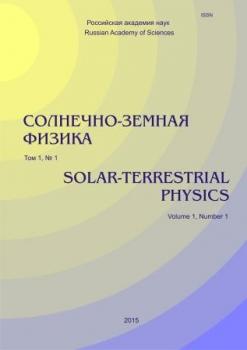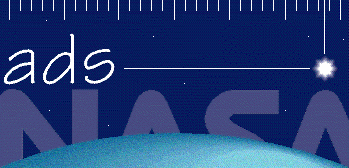Sankt-Peterburg, Russian Federation
Sankt-Peterburg, Russian Federation
Sankt-Peterburg, Russian Federation
Statistical estimations of Arctic Oscillation (AO) impact on air temperature regime in the Eastern part of Baltic region are presented. The region is characterized by high inter-annual and inter-seasonal variabilities. It is important to note that in the region of global warming extremely low winter temperatures can be observed on the European territory of Russia. AO is one of large-scale global structures of atmospheric circulation closely associated with weather variability in Northern Europe. AО anomalies occur in the upper atmosphere (stratosphere) and only then transferred to tropospheric lower layers. The anomalies can be preserved during long period up to two months, so they can be predictors in long-range weather forecast. In turn, changes in stratospheric polar vortex and sudden stratospheric warmings can be related to the geomagnetic activity. Perhaps, the geomagnetic activity influences the meridional temperature gradient and then changes in the structure of the stratospheric zonal wind. In turn, the changes have an impact on the tropospheric circulation. The stratosphere–troposphere connection occurs during winter months. Therefore, the paper presents the analysis of extremely cold winter anomalies in the Eastern part of Baltic Sea region. At the same time, we considered atmospheric circulation peculiarities related to AO phase change. The analyzable time interval covers 1951–2014.
Arctic Oscillation, polar vortex, extremely cold months, Eastern Europe, atmosphere circulation types
ВВЕДЕНИЕ
В восточной части Балтийского региона погода в холодный сезон является очень переменчивой не только из года в год, но и внутри одного сезона. Причиной этого является географическое положение региона, через который проходят воздушные массы различных типов. Недалеко от Балтийского региона находится Арктика, откуда приходят холодные арктические воздушные массы. С запада, с Атлантики, в исследуемый регион поступают влажные и теплые воздушные массы. С востока, со стороны Азиатского континента, из Сибири, приходят особо холодные континентальные воздушные массы.
Основными глобальными структурами атмосферной циркуляции, влияющими на погодные условия как во всей Северной Европе, так и в рассматриваемом регионе, являются Северо-Атлантическое колебание (САК) и Арктическое колебание (АК). Они регулируют интенсивность циклонической и антициклонической деятельности и, следовательно, адвекции различных воздушных масс. При оценке данной связи часто используются каталоги типов атмосферной циркуляции, поскольку конкретный тип атмосферной циркуляции может повлиять на формирование экстремальных условий погоды. Эти каталоги используются для оценки изменчивости погодных условий (или климата) на основании заранее установленных типов атмосферной циркуляции. Типы циркуляции чаще всего выделяются с учетом положения фронтов, структуры поля давления в данном регионе (положение ложбин и гребней на синоптических картах) [Hoy et al., 2013], а также на основании направления циклонических и антициклонических вторжений [Дзердзеевский, 1975].
Арктическое колебание описывается изменениями первой эмпирической ортогональной функции давления на уровне моря в Северном полушарии (20-90° N) зимой. Один центр давления находится в Арктике, а другой - в области между 37° и 45° N [John et al., 2008]. Выделяют две фазы АК - отрицательную и положительную, которые по-разному влияют на погодные условия в Северном полушарии.
На рис. 1 отображены схема полярного вихря и его влияние на погодные условия при разной интенсивности [John et al., 2008]. Индекс АК отрицателен, когда над Северным полюсом наблюдается относительно высокое давление, а над умеренными широтами (примерно над 45° N) - низкое. При отрицательной фазе АК вихрь вокруг Арктики ослабевает, что позволяет холодному воздуху проникать не только в центральные, но и южные районы Европы, Азии и Северной Америки [Hosansky, 2003]. При положительной фазе АК распределение давления противоположное [Jovanovic et al., 2008]. Во время этой фазы зона высокого давления в умеренных широтах вызывает сдвиг западно-восточного переноса и струйного течения на север [Cohen, 2011]. Эта ситуация способствует притоку теплого и влажного океанического воздуха в Европу и Северную Америку. При положительной фазе АК холодный арктический воздух не распространяется так далеко на юг, как при отрицательных значениях индекса АК: сильный западно-восточный перенос блокирует холодный воздух внутри арктических широт.
1. Baldwin M.P., Dunkerton T.J. Propagation of the Arctic Oscillation from the stratosphere to the troposphere. J. Geophys. Res. 1999, vol. 104, no. D24, pp. 937-946.
2. Chen D. A monthly circulation climatology for Sweden and its application to a winter temperature case study. Intern. J. Climatology. 2000. N 20. P. 1067-1076.
3. Cohen J. Eurasian snow cover variability and links with stratosphere-troposphere coupling and their potential use in seasonal to decadal climate predictions. Climate Test Bed Joint Seminar Series. NCEP, Camp Springs, Maryland. 2011.
4. Dzerdzeevsky B.L. Obshchaya tsirkulyatsiya atmosfery i klimat [Total Atmospheric Circulation and Climate]. Moscow, Nauka Publ., 1975, 228 p. (in Russian).
5. Hosansky D. The Arctic Oscillation: A key to this winter‘s cold - and a warmer planet. NCAR News Release. 2003. URL: www.ucar.edu (accessed April 8, 2012).
6. Hoy A., Jaagus J., Sepp M., Matschullat J. Spatial response of two European atmospheric circulation classifications (data 1901-2010). Theoretical and Applied Climatology. 2013, no. 112, pp. 73-88. DOI: http://dx.doi.org/10.2112/JCOASTRES-D-10-00157.1.
7. Jenkinson A.F., Collison F.P. An initial climatology of gales over the North Sea. Synoptic Climatology Branch Memorandum no. 62. Bracknell, Meteorological Office, 1977, p. 18.
8. John N., Scott S., Suim T., Wittoya K. North Atlantic Oscillation (NAO) / Arctic Oscillation (AO). Department of Meteorology SJSU. 2008. URL: http://www.met.sjsu.edu (accessed November 11, 2010).
9. Jovanovic G., Reljin I., Reljin B. The influence of Arctic and North Atlantic Oscillation on precipitation regime in Serbia. IOP Conf. Series: Earth and Environmental Science. 2008, vol. 4, no. 1, 012025. DOI: http://dx.doi.org/10.1088/1755-1307/4/1/012025.
10. Kulyamin D.V., Dymnikov V.P. Modeling of the total circulation of the troposphere-stratosphere-mesosphere including the ionospheric D layer. Geliogeofizicheskie issledovaniya [Heliogeophysical Research]. 2014, iss. 10, pp. 5-44 (in Russian).
11. Maheras P., Xoplaki E., Davies T., Martin-Vide J., Bariendos M., Alcoforado M.J. Warm and cold monthly anomalies across the Mediterranean Basin and their relationship with circulation; 1860-1990. Intern. J. Climatology. 1999, no. 19, pp. 1697-1715.
12. Mordvinov V.I., Ivanova A.S., Devyatova E.V. Arctic Oscillation and troposphere-stratosphere interactions. Solnechno-zemnaya fizika [Solar-Terrestrial Physics]. 2007b, iss. 10, pp. 106-112 (in Russian).
13. Mordvinov V.I., Ivanova A.S., Devyatova E.V. Geomagnetic activity and the total atmospheric circulation. Solnechno-zemnaya fizika [Solar-Terrestrial Physics]. 2007a, iss. 10, pp. 16-24 (in Russian).
14. Post P., Truija V., Tuulik J. Circulation weather types and their influence on temperature and precipitation in Estonia. Boreal Environment Research. 2002, no. 7, pp. 281-289.
15. Przybylak R., Majorowicz J., Wojcik G., Zielski A., Chorazyczewski W., Marciniak K., Nowosad W., Olinski P., Syta K. Temperature changes in Poland from the 16th to the 20th centuries. Intern. J. Climatology. 2005, no. 25, pp. 773-791.
16. Rimkus E., Kazys J., Butkute S., Gecaite I. Snow cover variability in Lithuania over the last 50 years and its relationship with large-scale atmospheric circulation. Boreal Environment research. 2014, no. 19, pp. 337-351.
17. Solomon S., Rosenlof K., Portmann R., John D., Sean D., Sanford T., Plattner G.K. Contributions of stratospheric water vapor to decadal changes in the rate of global warming. Science. 2010, vol. 327, no. 5970, pp. 1219-1223. DOI:https://doi.org/10.1126/science.1182488.
18. Stricherz V. UW scientists say Arctic Oscillation might carry evidence of global warming // University of Washington. 2001. URL:http://www.washington.edu/news/2001/06/01/uw-scientists-say-arctic-oscillation-might-carry-evidence-of-global-warming/ (accessed September 10, 2015).
19. Vargin P.N., Volodin E.M., Karpechko A.Yu., Pogorel’tsev A.I. On stratosphere-troposphere interactions. Vestnik RAN [Herald of the Russian Academy of Sciences]. 2015, vol. 85, no. 1, pp. 39-46 (in Russian).
20. Zherebtsov G.A., Kovalenko V.A., Molodykh S.I., Rubtsova O.A. Solar activity and dynamic processes in the atmosphere and World Ocean heat content. Solnechno-zemnaya fizika [Solar-Terrestrial Physics]. 2008, iss. 12, vol. 2, pp. 268-271 (in Russian).
21. URL: http://eca.knmi.nl (accessed August 18, 2015).
22. URL: http://www.cpc.ncep.noaa.gov (accessed August 18, 2015).


















